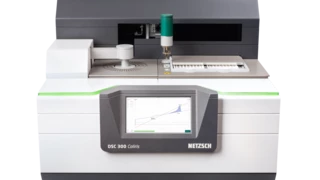Glossary
Polymorphism
Polymorphism is the ability of a solid material to form different crystalline structures (synonyms: forms, modifications).
Although different modifications of a polymorph have the same chemical structure, they differ in the physical properties such as:
- Solubility
- Melting Temperatures and EnthalpiesThe enthalpy of fusion of a substance, also known as latent heat, is a measure of the energy input, typically heat, which is necessary to convert a substance from solid to liquid state. The melting point of a substance is the temperature at which it changes state from solid (crystalline) to liquid (isotropic melt).Melting point
- Hygroscopicity
- DensityThe mass density is defined as the ratio between mass and volume. Density
- Specific Heat Capacity (cp)Heat capacity is a material-specific physical quantity, determined by the amount of heat supplied to specimen, divided by the resulting temperature increase. The specific heat capacity is related to a unit mass of the specimen.Specific Heat capacity
This influences the processability of drug substances and the performance of drug products, such as:
- Stability
- Absorption into the body
- Dissolution (rate)
- Bioavailability
That is why polymorphism is an important topic for the pharmaceutical and also the food field.
The different modifications of a polymorph can be characterized with differential scanning calorimetry (DSC).

Do you have any questions?
Suitable products for your measurement

Example
Polymorphism of Paracetamol
The figure depicts the two heatings of a paracetamol sample (initial mass: 2.6 mg). The heating rates as well as the cooling rate of the segment between both heatings amount to 10 K/min.
In the first heating, a peak at 169°C (onset temperature) is detected. This Melting Temperatures and EnthalpiesThe enthalpy of fusion of a substance, also known as latent heat, is a measure of the energy input, typically heat, which is necessary to convert a substance from solid to liquid state. The melting point of a substance is the temperature at which it changes state from solid (crystalline) to liquid (isotropic melt).melting temperature is typical for the monoclinic form I of paracetamol. [1]
During cooling at 10 K/min, no CrystallizationCrystallization is the physical process of hardening during the formation and growth of crystals. During this process, heat of crystallization is released.crystallization occurs. CrystallizationCrystallization is the physical process of hardening during the formation and growth of crystals. During this process, heat of crystallization is released.Crystallization takes place during the second heating at 72°C (onset temperature) to form another modification with Melting Temperatures and EnthalpiesThe enthalpy of fusion of a substance, also known as latent heat, is a measure of the energy input, typically heat, which is necessary to convert a substance from solid to liquid state. The melting point of a substance is the temperature at which it changes state from solid (crystalline) to liquid (isotropic melt).melting point at 157°C. This is typical for the orthorhombic form II of paracetamol [1].
